
Sandakan formerly known at various times as Elopura, is the capital of the Sandakan District in Sabah, Malaysia. It is the second largest city in Sabah after Kota Kinabalu. It is located on the Sandakan Peninsula and east coast of the state in the administrative centre of Sandakan Division and was the former capital of British North Borneo. In 2010, the city had an estimated population of 157,330 while the overall municipal area had a total population of 396,290. The population of the municipal area had increased to 439,050 by the 2020 Census.
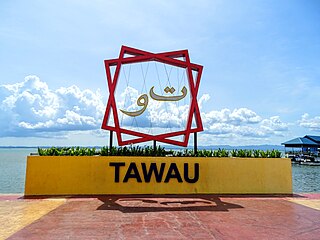
Tawau, formerly known as Tawao, is the capital of the Tawau District in Sabah, Malaysia. It is the third-largest city in Sabah, after Kota Kinabalu and Sandakan. It is located on the Semporna Peninsula in the southeast coast of the state in the administrative centre of Tawau Division, which is bordered by the Sulu Sea to the east, the Celebes Sea to the south at Cowie Bay and shares a border with North Kalimantan, Indonesia. The town had an estimated population as of 2010, of 113,809, while the whole municipality area had a population of 397,673. The municipal area had a population of 372,615 at the 2020 Census.

The Sandakan Death Marches were a series of forced marches in Borneo from Sandakan to Ranau which resulted in the deaths of 2,434 Allied prisoners of war held captive by the Empire of Japan during the Pacific campaign of World War II at the Sandakan POW Camp, North Borneo. By the end of the war, of all the prisoners who had been incarcerated at Sandakan and Ranau, only six Australians survived, all of whom had escaped. It is widely considered to be the single worst atrocity suffered by Australian servicemen during the Second World War.

The Ranau District is an administrative district in the Malaysian state of Sabah, part of the West Coast Division which includes the districts of Kota Belud, Kota Kinabalu, Papar, Penampang, Putatan, Ranau and Tuaran. The capital of the district is in Ranau Town. The landlocked district bordering the Sandakan Division to the east until it meets the Interior Division border. Ranau sits 108 km (67 mi) east of Kota Kinabalu and 227 km (141 mi) west of Sandakan. As of the 2010 Census, the population of the district was 94,092, an almost entirely Dusun ethnic community.

Kundasang is a hill station in the district of Ranau in Sabah, Malaysia that lies along the bank of Kundasang Valley within the Crocker Range, and also neighboring the town of Pekan Nabalu. It is located about 6 kilometres away from Kinabalu National Park, 12 kilometres from Ranau town and is renowned for its vegetable market which is open seven days a week. It is the closest town to Mount Kinabalu and has a panoramic view of the mountain. It is populated mainly by the native Dusun and a small population of Chinese people. Almost all the shops are operated by locals.
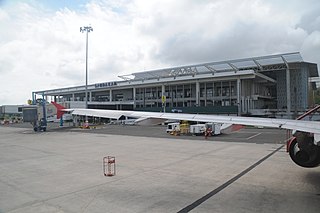
Sandakan Airport is a domestic airport which serves Sandakan in Sandakan District, Sabah, Malaysia. It is located 14 km (8.7 mi) west of downtown Sandakan. In 2005, the airport handled 621,513 passengers and registered 10,876 flights.
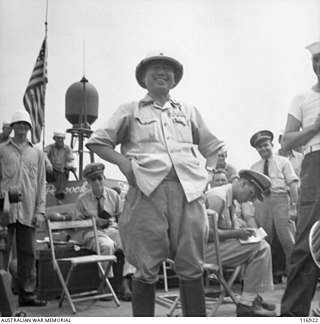
Lieutenant-Colonel Tatsuji Suga of the Imperial Japanese Army was the commander of all prisoner-of-war (POW) and civilian internment camps in Borneo, during World War II. A war criminal, Suga died by suicide five days after being taken prisoner by Australian forces in September 1945.

The history of Sabah can be traced back to about 23–30,000 years ago when evidence suggests the earliest human settlement in the region existed. The history is interwoven with the history of Brunei and the history of Malaysia, which Sabah was previously part of and is currently part of respectively. The earliest recorded history of Sabah being part of any organised civilisation began in the early 15th century during the thriving era of the Sultanate of Brunei. Prior to this, early inhabitants of the land lived in predominantly tribal societies, although such tribal societies had continued to exist until the 1900s. The eastern part of Sabah was ceded to the Sultan of Sulu by the Sultan of Brunei in 1658 for the former helping a victory over Brunei enemies, but many sources stated it had not been ceded at all. By the late 19th century, both territories previously owned by Sultan of Brunei and Sultan of Sulu was granted to British syndicate and later emerged as British North Borneo under the management of the North Borneo Chartered Company. Sabah became a protectorate of the United Kingdom in 1888 and subsequently became a Crown colony from 1946 until 1963, during which time it was known as Crown Colony of North Borneo. On 16 September 1963, Sabah merged with Malaya, Sarawak and Singapore to form Malaysia.
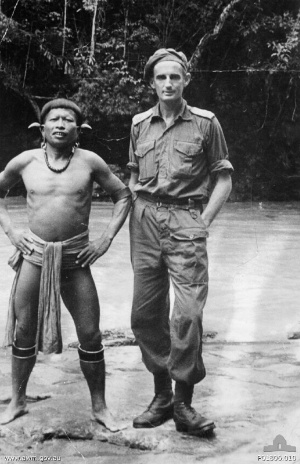
Major Gordon Senior 'Toby' Carter DSO was a New Zealand surveyor and road engineer who worked in Sarawak, Borneo prior to World War II for Shell Oil. He enlisted with the British Army during the war, and served in the Royal Australian Engineers and later in Z Special Unit in Borneo, where he was the Officer in Command of the Semut II operation in the Kelabit Highlands of Sarawak. In 1962 Carter had the initial idea for and was the driving force behind the establishment of both the Kinabalu National Park and the Kundasang War Memorial and Gardens near Mount Kinabalu in Sabah.

Before the outbreak of World War II in the Pacific, the island of Borneo was divided into five territories. Four of the territories were in the north and under British control – Sarawak, Brunei, Labuan, an island, and British North Borneo; while the remainder, and bulk, of the island, was under the jurisdiction of the Dutch East Indies.
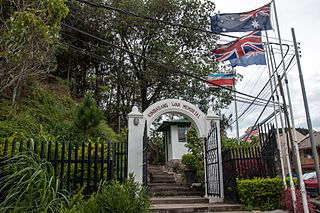
The Kundasang War Memorial is a memorial located in Kundasang in the Malaysian state of Sabah, which is dedicated to the British and Australian soldiers who died in the Sandakan POW camp during their death marches to Ranau. Besides that, it also recognises the suffering and sacrifice of the native population of Sabah.
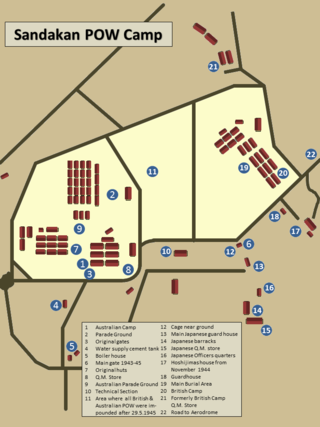
The Sandakan camp, also known as Sandakan POW Camp, was a prisoner-of-war camp established during World War II by the Japanese in Sandakan in the Malaysian state of Sabah. This site has gained notoriety as the Sandakan Death Marches started from here. Now, part of the former site houses the Sandakan Memorial Park.

The Starcevich Monument or Beaufort Australian Monument is a monument in the town of Beaufort in Sabah, Malaysia dedicated to Tom Starcevich from the 9th Division Army of Australia during the reconquest of the town by the Allied forces on 28 June 1945.

The Chartered Company Monument is a monument in the town of Sandakan in Sabah, Malaysia dedicated to the British servicemen or employees who were killed at the end of the 19th century. The monument was built by the British North Borneo Company and part of the Sandakan Heritage Trails, a trail which connects the historic sights of Sandakan.

Sandakan Massacre Memorial consists of three monuments which commemorate 30 Chinese victims, most of the members are local elite of an underground movement who been executed on 27 May 1945 along with several other victims during the Japanese occupation of North Borneo. The memorial was built on the spot where the massacre took place and where the victims were buried. It is located near a Chinese cemetery on a hill above the old town centre of Sandakan.

Cho Huan Lai Memorial or also known as Keningau War Memorial in the Malaysian town of Keningau in Sabah is a monument dedicated to Chinese Consul General Cho Huan Lai and his colleagues who died on 6 July 1945 after being executed by the Japanese.

St. Michael's and All Angels Church or for short St. Michael is an Anglican church in the city of Sandakan in the Malaysian state of Sabah in northern Borneo. St. Michael is the oldest stone church in Sabah. The impetus for the construction of the church dates back to the clergyman William Henry Elton, who is also known as the founder of St. Michael's Secondary School, located next to the church.

The Sandakan Memorial Park is a memorial site built in the former grounds of the former Sandakan camp in the Malaysian state of Sabah. The site is dedicated as a memory for all prisoners in the camp who died during the Sandakan Death Marches, and to those died during a march to Ranau. It is also recognises the suffering and sacrifice of the native population. This park hosts the Sandakan Memorial Day service on August 15.
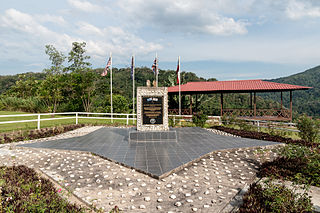
The Last POW Camp Memorial is a memorial in the district of Ranau in the Malaysian state of Sabah, which commemorates the victims of the Sandakan Death Marches who died during their march to Ranau. Of 1,047 British and Australian POWs, only 189 reach this site which is located near Liwagu Valley. Of these 189 total, 153 prisoners died in the next six weeks, 32 were murdered, while only four managed to escape. The current memorial was built where the former camp was located.
Lynette Ramsay Silver, is an Australian historian and author. She has written a number of books dealing with Australian and military history.
























